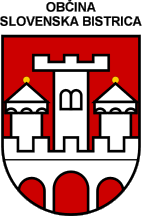Beethoboen Trio (IT)
Ludwig van Beethoven, 250 years
Triebensee, van Beethoven, Wenth
THE CONCERT IS FULLY BOOKED
We do not accept new reservations

Ticket order:
Free entranc
Artists’ message to visitors
Canonic “Harmonie“ programme played by Beethoboen Trio. A typical evening “Accademia” with the double reeds like guest stars! This program presents two wonderful trio originally written by Ludwig van Beethoven for two oboes and English horn, together with works by famous oboists and composers closed to the Beethoven’s friendship. One trio for two oboes and English horn by Johann Wenth was surely has heard by Ludwig, gave him the ideas for Trio op.87. Joseph Triebensee, oboist and composer, played as second oboe in the orchestra of the premiere of the Zauberflote, under the conducting of Mozart himself. The Beethoboen Trio plays on period instruments of the late XVIII, beginning of XIX century.
Event programme
Joseph Triebensee (1772-1846):
Trio avec deux hautobois et un Cor anglais
Allegro / Minuetto / Adagio / Allegro
Ludwig van Beethoven (1770-1827):
Trio avec deux Hautbois et un Cor anglais op.87
Allegro / Adagio / Minuetto, Trio / Finale, presto
*******
Johann Wenth (1745-1801):
Terzett fur zwei oboen und Englishorn
Adagio, Allegro / Minuetto, Trio / Adagio / Rondò
Ludwig van Beethoven (1770-1827):
Variationen über das Thema “Là ci darem la mano” aus Mozarts Don Juan
Tema, Andante / Variation 1, Allegretto / Variation 2, L’istesso tempo / Variation 3, Andante / Variation 4, Allegro moderato / Variation 5, Moderato / Variation 6 Lento espressivo / Variation 7, Allegretto scherzando / Variation 8 Allegretto / Coda, Vivace, Andante.
About the concert programme
Ludwig van Beethoven (1770-1827) is famous for his masterful compositions including symphonies, piano sonatas, vocal music, and instrumental chamber music. His two compositions for two oboes and English horn are core pieces of the oboe repertoire and perhaps the best-known oboe trios. Although the exact dates of his oboe trios are unknown, historians believe that his Trio in C Op. 87 was composed between 1794 to 1795 while his Variations on “Là ci darem la mano” was composed in 1795 to 1796 at the latest. It is almost certain that Beethoven wrote his oboe trios for the three Teimer Brothers Johann, Franz, and Philipp.
In musicologist Theodore Albrecht’s article about the dating of Beethoven’s trios, Albrecht explains Beethoven’s connections to the Teimer brothers. By the year 1789 all three Teimer brothers were employed in the service of Prince Schwarzenberg. In 1799, at the point at which the brothers no longer formed an oboe trio, the library for Prince Schwarzenberg’s octet Harmonie “included trios by Johann Nepomuk Went[h], Joseph Triebensee, Franz Krommer, Anton Wranitzky, Beethoven, and one Hochmayer.”
Beethoven had arrived in Vienna to study with Haydn and Antonio Salieri in November of 1792. The Teimer brothers performed a new trio by oboist Johann Nepomuk Wenth written specifically for the family trio for a Christmas benefit concert of the Tonkünstler-Societät in December of 1793. This concert would have also showcased a brand-new English horn purchased for Philipp Teimer by his employer Prince Schwarzenberg. Beethoven would have been exposed to performances by the Teimer brothers and likely would have written his two oboe trios for them out of admiration of their musicianship or to gain favour from their employer Prince Schwarzenberg.
The only documented occasion at which one of the Teimer brothers performed Beethoven’s Variations on “Là ci darem la mano” took place on December 23, 1797, at the Tonkünstler-Societät benefit concert. For this performance, Joseph Czerwenka (1759- 1835) and Herr Reuter played oboe while Philipp Teimer played English horn. Albrecht states that this is the last documented performance with Philipp playing in an oboe trio; however, it surely was not the first performance of Beethoven’s Variations trio. There is a great possibility that the Teimer brothers performed both trios in several “unreported private and even public concerts before Franz Teimer’s death ended the career of the Gebrüder Teimer on May 15, 1796”.
Beethoven’s Trio in C Op. 87 was first published by Artaria & Co. in Vienna in 1806. His trio Variations on “Là ci darem la mano” was not published during his lifetime. This trio was published in 1914 and is categorized today as WoO (Werke ohne Opuszahl) 28.
Bohemian composer and oboist Josef Triebensee (1772-1846) studied composition with Johann Georg Albrechtsberger and oboe with his father Georg Triebensee. Throughout his career, Georg worked as first oboist in the emperor’s Harmonie and first oboist with the Nationaltheater in Vienna. In 1791 Josef Triebensee served as second oboist at the Theater auf der Wieden. During his service at the Theater auf der Wieden, Triebensee performed in the premiere of Die Zauberflöte, directed by Mozart. Triebensee performed regularly for the Tonkünstler-Sozietät concerts in Vienna and in 1793 he began service as second oboist at the Kärntnertortheater. In 1794 he became first oboist and Kapellmeister for Prince Liechtenstein’s Harmonie at Feldsberg. He served here until 1809 when the Harmonie dissolved. Triebensee began employment in service of Count Hunyady in Vienna in 1811 during which time he also worked as a theater composer in Brno. In 1816 Triebensee succeeded Weber for the position of director of the Prague Opera. He remained the director there until his retirement in December of 1836.
Triebensee’s most noteworthy compositions include two sets of Harmoniemusik. These sets include original and arranged pieces. The first set of Harmoniemusik was advertised in the Wiener Zeitung on November 16, 1803. The second set, Miscellanées de musique, was likely commissioned for the emperor’s Harmonie. Triebensee additionally wrote twelve comic operas for stages in Vienna and Prague as well as several smaller vocal works, orchestral works, and chamber works.
Johann Wenth (1745-1801, last name also appears as Went, Vent, Wend, Wendt. First and middle names also appear as Jan Nepomuk) was a Bohemian oboist, English hornist, and composer. He was first employed as an oboist for Count Pachta in Prague. In the mid-1770s he worked as the first English hornist in the Harmonie of Prince Schwarzenberg at Wittingau and Vienna. In 1777 he additionally began work as second oboist in the Nationaltheater orchestra in Vienna. He resigned his work with Prince Schwarzenberg in 1782 to perform second oboe to Georg Triebensee in the Kaiserlich-Königliche Harmonie. He performed in this Harmonie until the year of his death.
Throughout his career, Wenth transcribed over fifty opera and ballet scores for Harmonie. For nearly twenty years, Wenth coordinated much of the repertoire for the emperor’s Harmonie and also the Schwarzenberg Harmonie. Wenth’s only published works during his lifetime were three string quartets and twenty-three Pièces en harmonie. Other works by Wenth include a variety of transcriptions, wind compositions, one symphony, eleven quartets, five flute duos, six quintets for oboe, bassoon, and string trio, and eleven works of Harmoniemusik.
(Melissa Sassaman)
Slovenska Bistrica, Slovenska Bistrica Castle
The Slovenska Bistrica Castle is the central town building and an example of large lowland castle formations in Slovenia. The earliest documented use is dated 1313.



















